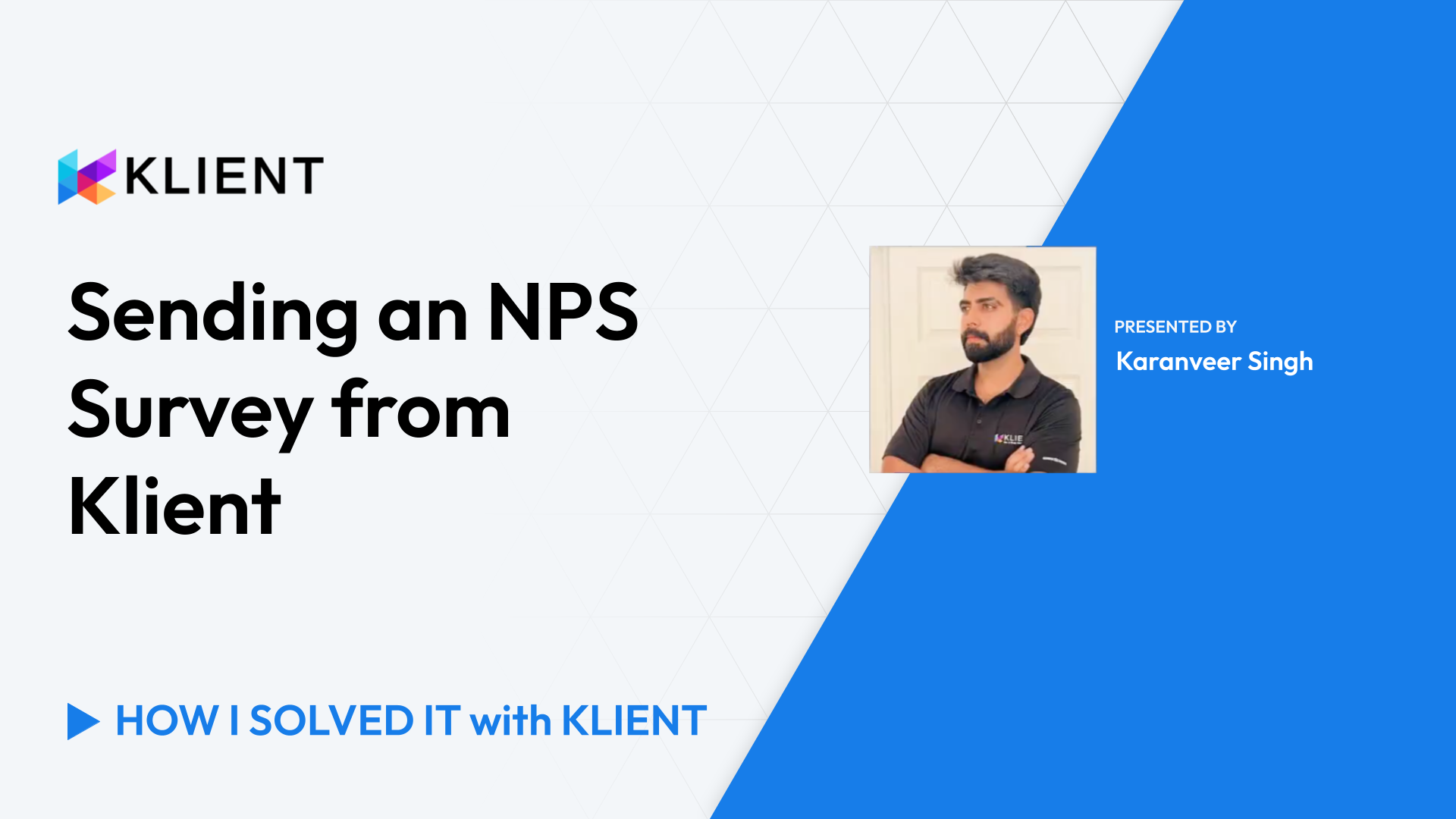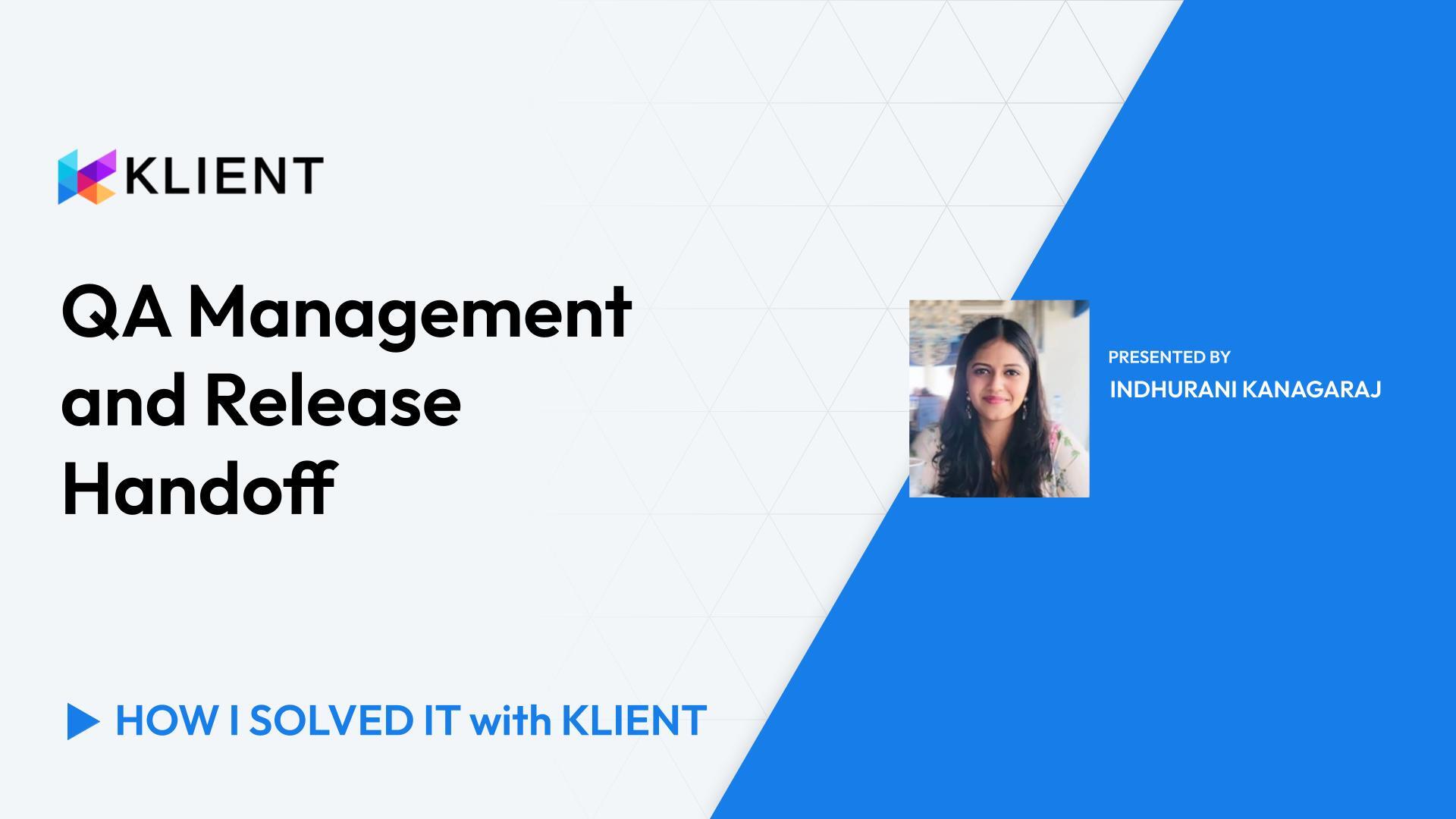Prevent Revenue Leakage With Dashboards
Challenges in Revenue Management
Causes of Revenue Leakage
Best Practices for Prevention
Efficient Approval Processes
Comprehensive Dashboards
1. Introduction (0:00 – 0:13)
Hello everyone! Dominic here for another ‘How I Solved It With Klient’ focusing on the invoicing aspect of a project and how we can leverage the dashboards to prevent revenue leakage.
2. Challenges in Revenue Management (0:14 – 0:45)
Probably we’ll be stating some obvious things here, and it’s just a limited list, but revenue leakage is obviously one of the challenges here, often caused by a limited data visibility so we have disconnected systems, the information is in different areas, and we don’t have that holistic view of what needs to be addressed or done before we can actually generate our invoice. So we don’t know if there’s any revenue left on the table.
3. Causes of Revenue Leakage (0:46 – 1:15)
One of the causes of that also is the lack of an intelligence system, a disconnected system, or just a structured approach to our data processing. That is also an issue where we have things that are stuck into process because we don’t have tools to help us on getting that process correctly. And then slow cash flow often cause a bit of, for all those reasons, there’s a lot of manual work. We need to reconciliate information from different places, areas, spreadsheets, run after people or send emails so obviously you know the drill.
4. Best Practices for Prevention (1:16 – 1:45)
So these are often challenges that we need to address when we have discussions with customers and how we can structure that with Klient and the different tools we have on the Salesforce platform. So best practices, just to name a few: clear billing models, obviously, so that each of the projects and what it needs to be invoiced on each of those projects and have the system help you gather the information eventually.
5. Efficient Approval Processes (1:46 – 2:10)
Efficient approval process, time and expense. Most likely for those timesheets and those expense reports that needs to be invoiced, we need to have a clear and efficient, or simple way to have that approved so that we get it on the right task, on the right project, and eventually generate the invoice only once. Project ownership, accountability is core to all operations.
6. Comprehensive Dashboards (2:11 – 2:45)
I think we need to make sure that we know who we need to go to and see if there’s information that needs to be reviewed, or addressed, and get everything or wrap everything together here, a comprehensive set of dashboards. You should have dashboards for each part, portion of your process and then one for each mindset that needs to be in. In this case, I’m going to talk about the ‘Pre-Invoicing Dashboard’ that is core, or out-of-the-box in Klient. It is often a starting point.
7. Dashboard Features (2:46 – 3:15)
If you have any specifics, you can take that one and spin one for you, with more or less components. But obviously this one here is, a very good starting point, we think based on the feedback we got from customers, and it’s been worked on, as we have been working with customer obviously. So my color code here is: blue is stuff that needs still to be processed or addressed by someone before we can get it on an invoice.
8. Tracking Invoices (3:16 – 3:45)
So usually stuff that are unapproved, billable timesheets, expenses that are in your system that are supposed to be invoiceable. You’ll want to make sure that you have that discussion with your PMs or whomever is responsible for approving. So here I have that grouped by project, but also by PMs so that we can either send a chatter, call on the phone and say ‘Okay, can you process your different projects? I’m trying to do the invoicing.’
9. Team Coordination (3:46 – 4:15)
So teamwork here, not trying to blame anyone, but more on trying to address that as a team, make sure that the information is progressing correctly in our system. So timesheets, expenses, and milestones. If you’re more of a deliverable type of business, milestones is the term that we’re using in Klient for those items that needs to be completed to be invoiced.
10. Conclusion (4:16 – 4:45)
So do we have stuff in the past that needs to be rescheduled or marked as completed? So again, having that discussion with the PM so that the data quality remains as high as possible, and we are sure that when we click on ‘Generate invoice’ as we’ll see later, everything is included. Hopefully that helps. Let us know if you have any questions, comments. It’s always a pleasure to get in contact with you. We’re here to help. Thanks. Have a great day!

Found this helpful?
Here are some similar videos in our serie How I Solved It with Klient
Subscribe to our channel
Visit and subscribe to our channel for more insights on leveraging Klient to solve your business challenges.










